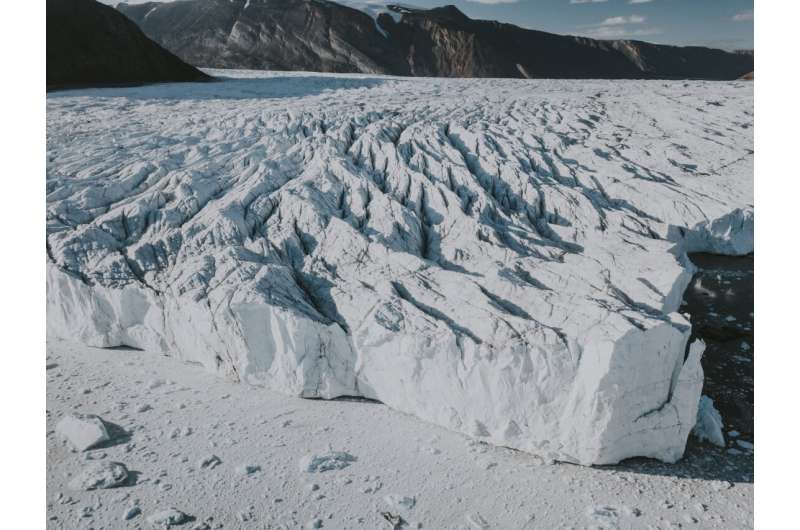
A new study led by the University of Arizona may have solved two mysteries that have puzzled paleo-climate experts: Where did the ice sheets that rang in the last ice age come from and how could they grow so quickly?
It's not easy to understand what drives the periodic advance and retreat of ice sheets in the Northern Hemisphere. An explanation for the rapid expansion of the ice sheets that covered much of the Northern Hemisphere during the most recent ice age has been proposed by a new study.
Massive ice sheets formed after the Northern Hemisphere climate plummeted into a deep freeze. Large ice sheets covered much of Canada, Siberia and northern Europe over a period of about 10,000 years.
While it has been widely accepted that periodic "wobbling" in the Earth's orbit around the sun causes cooling in the Northern Hemisphere summer, scientists have not been able to explain the extensive ice sheets covering much of Europe.
The North Atlantic Current, which brings warm water to the coast of northwestern Europe, should have kept Scandinavia mostly ice-free. Although the two regions are located along similar latitudes, the summer temperatures in the Nordic countries are well above freezing, while the temperatures in the Canadianarctic are below freezing. Marcus Lofverstrom, the study's lead author, said that climate models have struggled to account for the glaciers that advanced in northern Europe.
Lofverstrom, an assistant professor of geosciences and head of the UArizona Earth System Dynamics Lab, said that they don't know where the ice sheets came from or why they expanded so quickly.
To find answers, Lofverstrom helped develop an extremely complex Earth- system model, known as the Community Earth System Model, which allowed his team to recreate the conditions that existed at the beginning of the most recent glacier. He expanded the ice-sheet model to cover most of the Northern Hemisphere. The researchers used the updated model configuration to identify the ocean gateways in the Canadian Arctic Archipelago as a critical linchpin controlling the North Atlantic climate.
The simulations show that if the ocean gateways in the Canadian Arctic Archipelago remain open, the Northern Hemisphere will be cooled enough to allow ice sheets to build up in Northern Canada and Siberia.
In a second experiment, the researchers created a scenario in which marine ice sheets would block the waterways. In that experiment, the fresh water from the North Pacific was diverted to the east of the island. The North Atlantic deep circulation and sea ice were weakened by this diversion.
Lofverstrom said that ice forming in northern Canada can block ocean gateways and lead to a weakened ocean circulation in the North Atlantic.
According to Diane Thompson, assistant professor in the UArizona Department of Geosciences, there is evidence of glaciers in northern Canada thousands of years before the Europeans. The evidence of a weakened deep ocean circulation is similar to what we found in the model results.
The authors believe that the formation of marine ice in northern Canada may be necessary for the start of the ice age in the area.
Lofverstrom said that pushing climate models beyond their traditional application of predicting future climates gives an opportunity to identify previously unknown interactions in the Earth system.
He said that it is possible that the mechanisms identified here apply to every period in the past. The Younger Dryas cold reversal (12,900 to 11,700 years ago) is one example of a short-lived cold period.
More information: Marcus Lofverstrom, The importance of Canadian Arctic Archipelago gateways for glacial expansion in Scandinavia, Nature Geoscience (2022). DOI: 10.1038/s41561-022-00956-9. www.nature.com/articles/s41561-022-00956-9 Journal information: Nature Geoscience